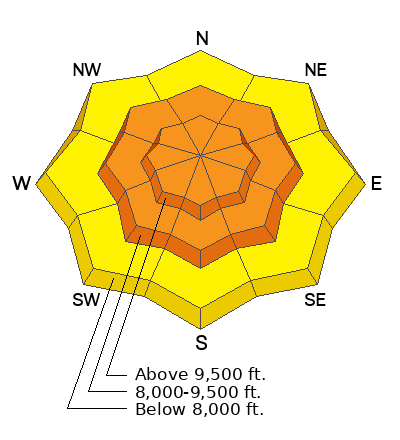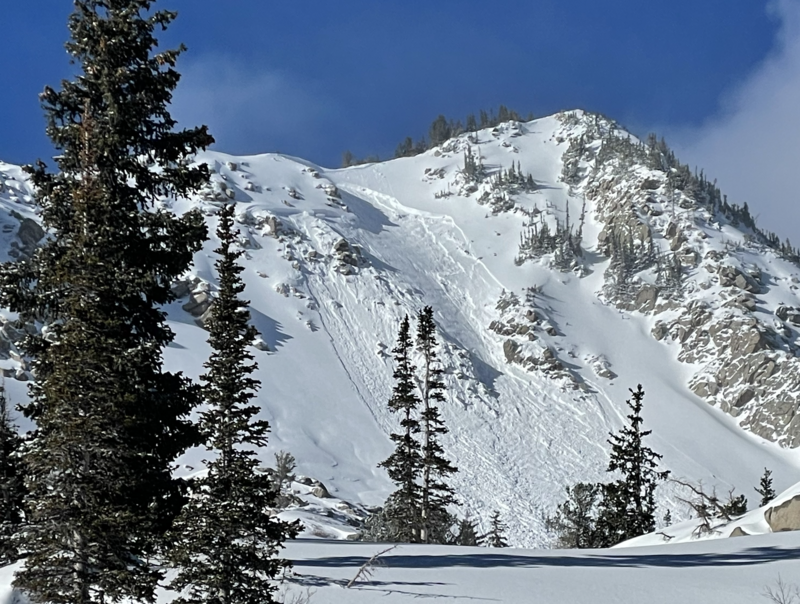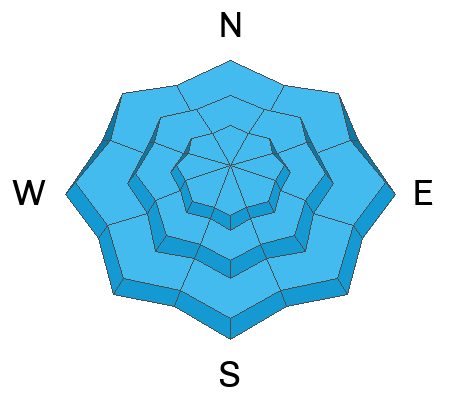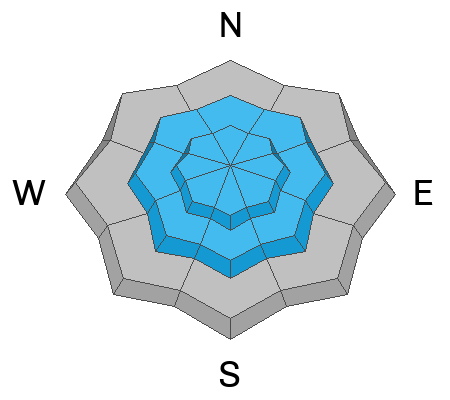Join the Utah Avalanche Center and the Utah Division of Outdoor Recreation to celebrate the Fourth Annual Avalanche Awareness week from December 4 - December 11. Click
HERE to view the full list of events for the week.
Current mountain temperatures are 15-20 °F across most upper elevation stations, while some lower elevation trailheads hover in the single digits. Overnight the winds backed to the southwest and increased in speeds, and are currently blowing 10-15 mph with gusts into the low 20's. Some upper elevation stations read higher wind speeds blowing 15-25 mph.
Today as the southerly winds build, it will usher in warmer temperatures climbing into the 25-30 degree Fahrenheit range. Southwest winds will blow 10-20 mph with gusts reaching into the mid 20's across most of the upper elevation terrain. Clouds will quickly build, and if we are lucky enough, we will see a trace to a couple of inches of new snow later today into tonight.
Over the past few days, relentless south and west winds have truly changed the landscape, with some slopes stripped to the dirt and others having drifts of wind-blown snow 1-4' deep (or deeper). Thursday's 6-12" storm snow was a welcome site and generally helped the riding conditions.
Let me reassure you if you're wondering if you can trigger an avalanche today. Look at yesterday's avalanche activity and remember that the number one clue to avalanches is RECENT AVALANCHES. If we are seeing avalanches or hear about people triggering avalanches? WE can trigger avalanches.
Avalanche -
Sheepsh!t Ridge north facing 9,300' in elevation 16" deep 80' wide
Avalanche -
10420 Ridge north facing 9,600' in elevation 15" deep 150' wide
Avalanche -
Tuscarora southeast facing 10,500' in elevation 3' deep 100' wide
Avalanche -
West Willow northeast facing 9,400' in elevation 3' deep 250' wide running 400' vertical
Avalanche -
Clayton's northeast facing 10,300' in elevation 2' deep 200' wide running to the flats
Avalanche -
Ant Knoll east facing 9,700' in elevation 2' deep 150' wide running to the flats
Avalanche -
Beartrap northwest facing 8,000' in elevation 2' deep 50' wide
Avalanche -
Mt Aire northeast facing 7,800' in elevation 12" deep 200 ' wide
Snow safety teams triggered many avalanches with explosives that were large enough to catch, carry, bury, and or kill a person.
Photo: Human Triggered Avalanche Tuscarora.











